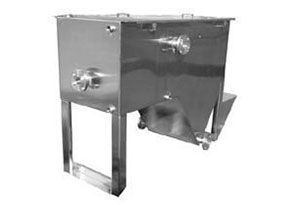For owners and managers of maintenance shops, staying in compliance with environmental regulations is a top priority. Whether you run an auto repair shop, a bus repair depot, an airplane hangar, or a similar facility, dealing with oily wastewater is a daily reality. Fortunately, with the right equipment, managing this wastewater can be a simple and straightforward process. Ecologix Environmental Systems offers robust and easy-to-implement above and below ground oil/water separators that provide an effective and affordable solution, no matter what kind of oils you need to separate or how low your discharge requirements are.
How Oil/Water Separators Work
The basic principle behind oil/water separation is gravity. Oil is less dense than water, so it naturally floats to the surface. An oil/water separator is a device specifically designed to slow down the flow of wastewater, giving the oil droplets enough time to rise and be collected. This process is governed by a scientific principle known as Stokes' Law, which describes how quickly a particle (in this case, an oil droplet) will rise or settle in a liquid. The larger and less dense the oil droplet, the faster it will rise.
Separators are typically designed with several key features:
- Inlet: This is where the oily water enters the separator.
- Solids Settling Area: As the water enters, heavy solids and sediment settle to the bottom of the tank for later removal. This pre-treatment step is crucial as it reduces the load on the coalescing media, minimizing maintenance and extending the life of the system.
- Coalescing Media: This is the heart of the separator. Many separators use plates or media that provide a large surface area for oil droplets to collide and combine, or "coalesce." As the droplets get larger, they rise to the surface much faster.
- Oil Storage: The separated oil forms a layer at the top of the separator, where it can be skimmed off and collected for proper disposal or recycling.
- Outlet: The clean water flows out of the separator, ready to be discharged in compliance with local regulations.
Above Ground vs. Below Ground Separators
Ecologix offers both above and below ground separators to fit the specific needs of your facility.
- Above Ground Separators: These are ideal for facilities with limited space or where excavation is not feasible. They are easy to install and access for maintenance.
- Below Ground Separators: These are a great option for new construction or facilities with ample outdoor space. They are installed underground, keeping them out of sight and freeing up valuable floor space in your shop.
Use Cases for Oil/Water Separators
Oil/water separators are considered a Best Management Practice (BMP) and are essential for a wide range of maintenance and repair facilities to prevent pollution. Common applications include:
- Auto and Truck Repair Shops: To handle oil and grease from engine repairs, parts washing, and floor cleaning.
- Bus and Fleet Maintenance Depots: To manage wastewater from washing and servicing large vehicles.
- Airplane Hangars: To separate jet fuel and hydraulic fluids from wash water.
- Railroad Maintenance Yards: To treat oily runoff from locomotive and railcar servicing.
- Industrial Manufacturing: For any process that generates oily wastewater.
By installing a high-quality oil/water separator, you can ensure that your facility remains in compliance with environmental regulations, avoid costly fines, and protect the environment.
Conclusion
Ecologix Environmental Systems provides reliable and cost-effective oil/water separation solutions for any maintenance shop. Their use of high-density oil coalescing media and smart design ensures efficient and low-maintenance operation. Whether you need an above ground or below ground unit, Ecologix has the right solution to keep your shop clean, compliant, and running smoothly.
Ready to implement a robust separation solution?
Contact our experts to find the perfect oil/water separator for your needs.
Request a QuoteReferences
- United States Army Corps of Engineers. (2005). Engineering and Design: Oil/Water Separators. U.S. Army.
- New Jersey Department of Environmental Protection. (2021). New Jersey Stormwater Best Management Practices Manual - Chapter 9.5: Oil/Grit Separators.
- U.S. Environmental Protection Agency (EPA). (2008). Stormwater Best Management Practice: Vehicle Maintenance.

